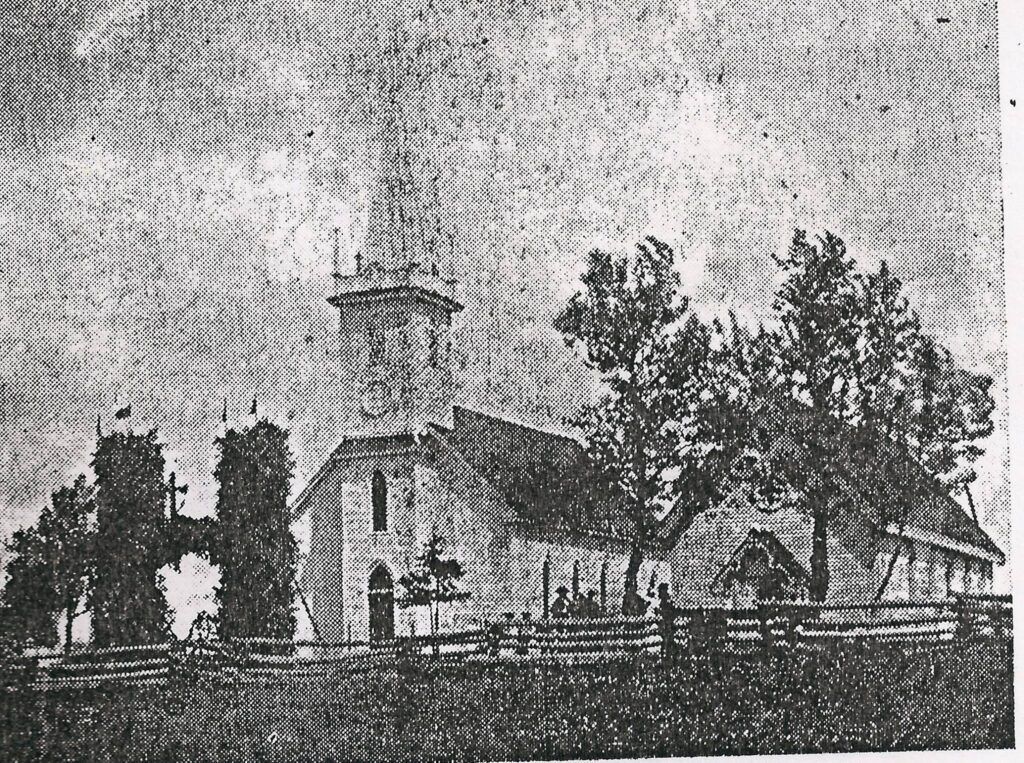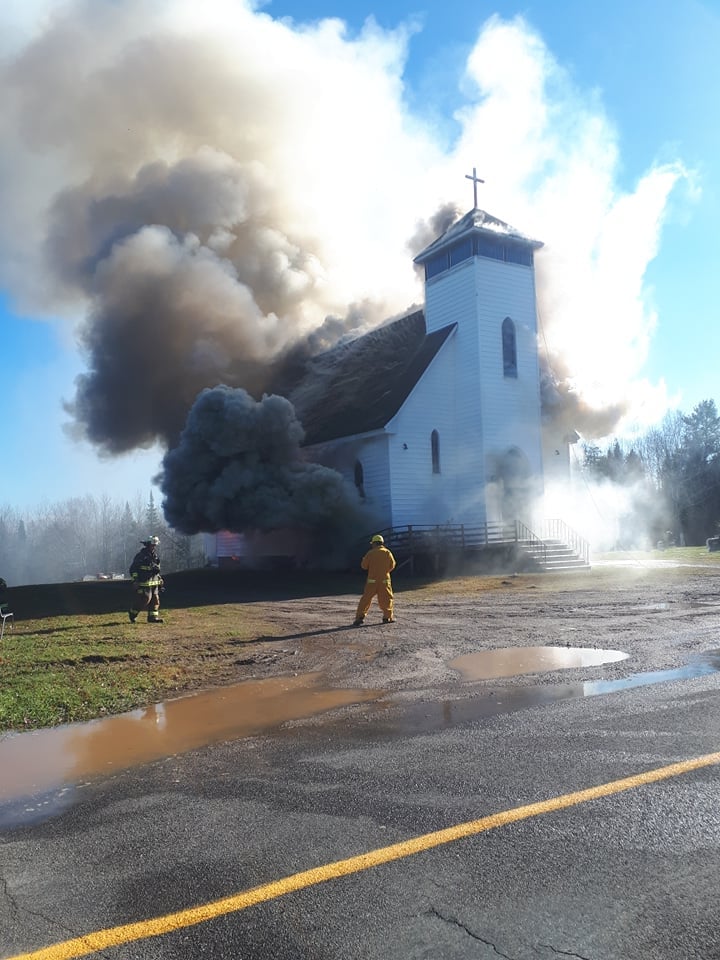
The first Church of Immaculate Conception was built in Cork, York County, New Brunswick in around 1861. The structure was destroyed by the Saxby Gale in 1869 and a second structure was built immediately afterwards. By 1901, the congregation had outgrown the church leading to a third and larger church being built between 1901 and 1903 next to the existing church. The second church was then used as the Parish Meeting Hall.
This third church was struck by lightning and burned to the ground on July 9, 1943. The fire also destroyed the Parish Meeting Hall. The following spring, building a fourth Church was initiated and finally completed in the winter of 1947. The congregation was able to use the church as it was being built.
The photo below shows the third church which was struck by lightning as well as the second church next to it which was used as a parish hall.


In 2021, the sad decision was taken that the church was no longer financially sustainable and that it had to come down. Here is a photo of it being demolished via a controlled fire.
More details can be found at From the Scrapbook: The Cork Churches by Rev. Bill Randall


